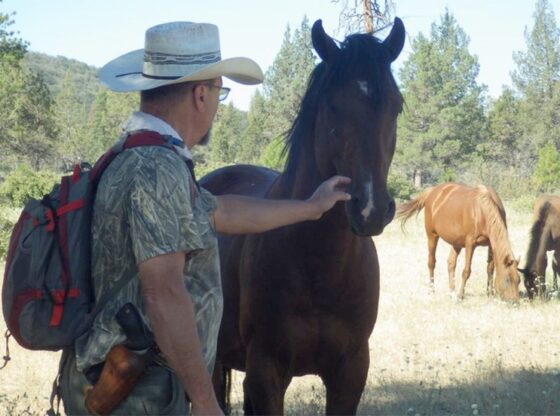This is just one of many stories touting massively inflated numbers concerning horses and donkeys.
Just how many horses and donkeys remain ‘out there’, anyway? Who’s counting? And what proof do they have of what they’re saying?
We’ve interviewed ‘watchers’ who are BLM approved people attending round ups and sone of these people swear they’re rounding up horses and donkeys, releasing them into another area to be rounded up again [for which they’re paid incredible sums of money] and then using those figures to prove that the horses and donkeys are overpopulating America’s landscape.
How can this happen? The same way all things happen in government: The BLM [Bureau of Land Management] and the USDA’s [U.S Department of Agriculture], the overseer of the USFS [United States Forest Service] all, magically, come together to overrun America’s wild horse and donkey population — often with little or no input from Americans themselves.
Let’s start with determining who’s who in the world of wild horse and donkeys with an eye towards the preservation thereof.
It’s readily apparent that a lot of those professing to care about wild horses and donkeys, don’t actually care at all — in fact, they’re interested in their own self interests whilst attempting to muddy the waters surrounding the destruction of these herds. Once they’re eradicated, they will not be back: not in our lifetimes, at least.
This begs the question: Who are we to destroy these animals that played such a critical role in the settling and the subsequent building of the United States? And they still play such a critical role in growing crops and providing transportation in third world nations that they’re considered instrumental to survival. [China is known for stealing and killing the donkeys owned by families reliant on farming. Why? So they can be used to create ELIAO.
Who — or what — is the BLM, once the US governed ‘Bureau of Land Management‘ today. The BLM even has its own law enforcement agency. But with so many of America’s horses and donkeys going to slaughter, how effective are they in that position? Shouldn’t there be another agency tasked with protecting these animals?
There is a second agency. It’s the USDA’s own USFS, otherwise known as the US Forest Service. How is this strategy working for the horses and donkeys?
It’s completely unknown how many of these animals are actually ‘out there’ and the resources that could have been utilized to determine and ‘manage’ those herds? Squandered. Largely on helicopter roundups and contractors that are often horrifically abusive.
People in these positions often act in horrifically abusive ways. Foremost in the ‘why’ category is the reluctance of anyone with any level of compassion to take these positions in the first place — leaving them to whomever is callous enough to want to participate in roundups.
And those killing these animals when they finally reach their destinations? Well, put it this way: Whatever the question — HORSE SLAUGHTER is NOT the answer.
Click here to learn more: The horse slaughter debate: separating facts from rhetoric | Horsetalk.co.nz – equestrian feature articles — And Viewer Be Forewarned – The picture of this suffering horse is distressing.
Taxpayer Dollars (wildhorserange.org)
And now, our wild horse populations are actually being blamed for CLIMATE CHANGE!
On the heels of that story, though, naturalist William Simpson III is determined to expose the truth: that wild horse populations actually protect against climate change — and must be preserved.
The facts about horse slaughter | The Humane Society of the United States
